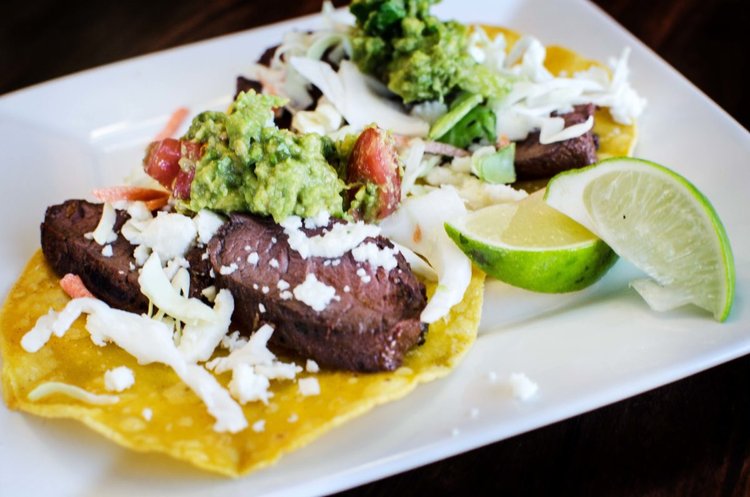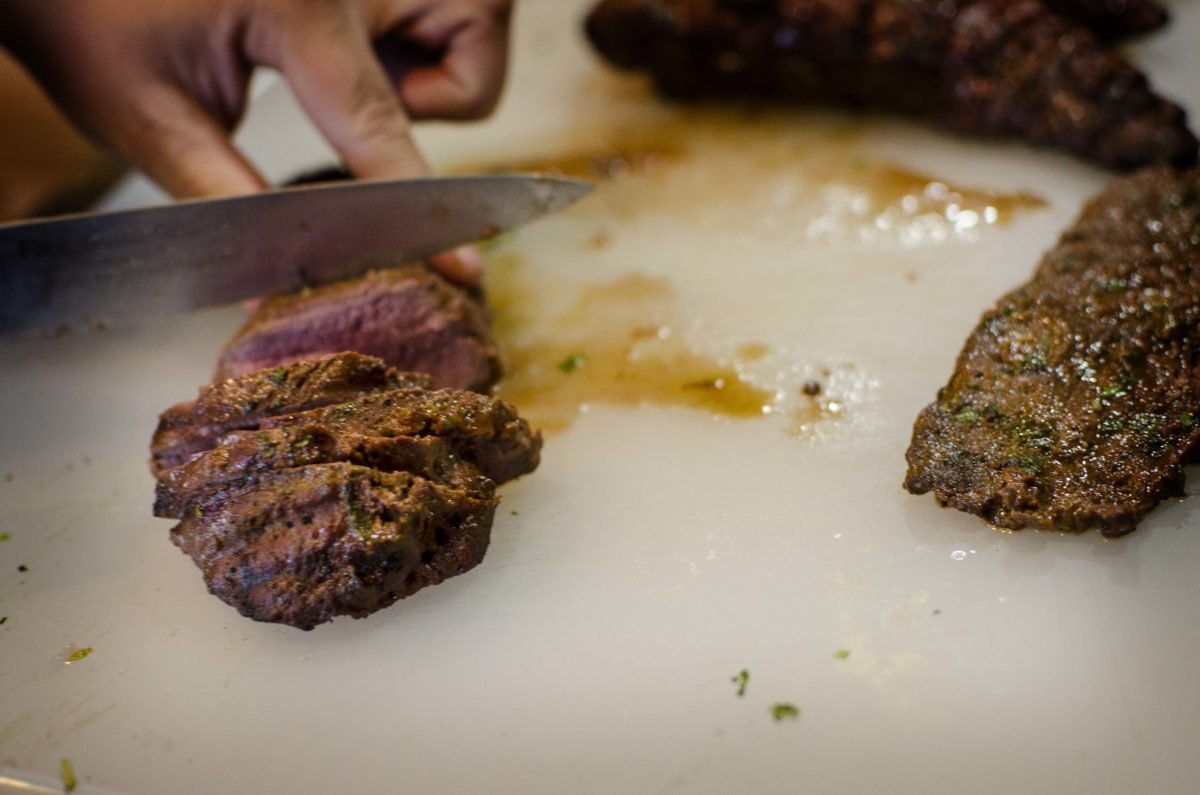Carne Asada Pronghorn. When translated directly to English, carne asada means "grilled meat." However, the term in Spanish can mean several things. Carne refers to meat and asada refers to barbeque techniques as well as idea of social gatherings that occur when a barbeque is held. So the term can not only refer to the actual grilling of meats, but also to the idea of a social gathering to share and enjoy a family meal.
"My favorite memories growing up in North Carolina were hunting and fishing with my father and brothers. There, I developed a deep appreciation for protecting land and waterways. There, I learned outdoorsmanship." ~ Louis BaconCarn
I found this second definition particularly thought-provoking. Gathering to share a meal with good company is a universal language and a tradition important to many cultures. In the United States, we have holidays dedicated to just this tradition. At Thanksgiving, families and friends gather to share recipes, stories, and traditions around a table stuffed with turkey, mashed potatoes, and whatever casserole has been passed through the family for generations. In Mexico, families gather to show respect for the departed during Dia De Los Muertos (Day of the Dead) by constructing altars in their homes. The altars are adorned with the deceased's favorite foods, drinks, and treats. In Italy, the Feast of Seven Fishes is celebrated on Christmas Eve. This dining event, which dates back to Medieval times, hosts a seven course meal centered entirely around fish. The list is endless and includes all cultures.
Barbeques are just simpler versions of these usually oversized traditions. I know for myself, if I am going to fire up the grill I suddenly start inviting the entire neighborhood. It doesn't matter how last minute the plans are, or how simple the meal is going to be. If I am just throwing a couple of burgers on, I still feel the need to invite my parents over. If I am preparing some grilled kabobs, I am also calling my friends over to share in the event. Barbeque just begs for you to call up friends, share some stories, and enjoy an evening out in the backyard.
I had never made carne asada before. I have tried it several times in different restaurants, and it is always good. When I started looking for some different recipes on how to prepare the meat, I came across the origin and definition of the word carne asada. That translation of "social gathering" made the meal seem even more special. And in true barbequing fashion, I called my family and invited everyone over for an evening of carne asada, story sharing, and a break in the backyard from the rest of the world. Ahhhh, nothing like a backyard barbeque!
A little trick I learned awhile ago is when mincing garlic you can also just grate it with a plane file. This is a bit faster than mincing and you don't have to dirty an entire cutting board just for garlic.
Traditionally, carne asada is prepared from beef steak. The cuts used are usually the more tender steaks, such as skirt, flank, or flap steak. The meat marinades for at least 24 hours, but sometimes for a couple of days. It is grilled over an open flame at a high temperature in order to char the flavors of the marinade and seal in the juices. After searing the meat, it is cooked to well-done. It is typically served on a tortilla with salsa, guacamole, beans, and onions.
Putting the steaks in a Ziploc bag make for easy storage in the fridge. It also creates an easy way to really massage the marinade into the meat.
To create a twist on the traditional carne asada, I decided to make it using pronghorn! Pronghorn is an amazing meat to use for carne asada. It is extremely tender, and takes the marinade really well. For this recipe, I used two cuts of some backstrap and then also a flank steak. It was about two pounds worth of meat, perfect for sharing with a group of six.
The key to a great carne asada is allowing the meat plenty of time to marinade. I set my marinating meat in the fridge 24 hours before I was planning on grilling it. If you are pressed for time, or just decide you want to make this the morning before your barbeque, I think 12 hours would be fine. You could also go longer than 24 hours too.
There is no strict way to marinade carne asada. Different recipes call for different ingredients, and as with most marinades, you could also add things as you go along. I like to taste my marinades and then add to them as the flavors start to develop. Some marinades call for lemon and lime juice, Worcestershire sauce, and a variety of spice rubs. I like my carne asada to have a little heat to it, but also a subtle hint of sweetness.
For my marinade, I juiced two oranges, a lemon, and two limes. To the juice, I added half of cup of coconut aminos, which is where the little bit of sweetness comes from, four cloves of garlic, three tablespoons of chipotle sauce, chili powder, cumin, oregano, black pepper, and sweet paprika. I chopped up a handful of cilantro and then whisked in a half a cup of extra virgin olive oil. Set aside a cup of the marinade for serving alongside the meat. I placed the cuts of meat in a large freezer bag, poured the marinade in, gave everything a nice massage, and placed it in the fridge for the next day.
Preheat the grill really hot. I got mine up to about 550 Fahrenheit. I also have one other little tip before you throw the meat on the grill. Pull the meat out of the fridge about fifteen or twenty minutes before you are going to start cooking. Allow the meat to come to room temperature. This will take the cool from the fridge off the meat and allow you to get a more even heat throughout the steaks. Place the steaks directly on the heat source and cook on each side for one to two minutes. You are looking for grill marks and even a little char on the steaks.
After searing the steaks, move them to an area on the grill with less direct heat. This may be off to the side, away from the flame, or you may have an upper rack level on your grill. My grill has this upper rack, so I moved them there. Close the lid and allow the steaks to slow cook for a few more minutes. How long you allow them to cook will depend on the steaks' thickness. My steaks were about an inch to an inch and a half thick, so I cooked them for seven to ten minutes. Once the steaks reached medium, which I tested with a meat thermometer, I pulled them. Place aluminum foil over the steaks, creating kind of a tent with the foil, and allow them to sit for five more minutes. Allowing the meat to sit for a few minutes gives them a chance to finish cooking, which brought my steaks to about medium-well, and also helps to seal in the juices. If you cut the steaks immediately after pulling them off the grill, the juices rush out of the steak and that is a very sad thing! The meat will also be easier to cut if you let it cool down a bit, and you won't tear it with the knife.
Working across the grain of the meat, slice the steak into quarter-inch thick slices.
To serve the carne asada, lightly grill up some corn tortillas. You could also use flour if you prefer them. Place a few slices of meat on the tortilla and pile on your favorite toppings. I sliced up some fresh jalapenos for extra heat. I also offered more fresh cilantro, grilled bell peppers and onions, shredded cabbage, salsa, sour cream, guacamole, and queso fresco. Oh! And don't forget to spoon on some of that marinade you set aside! It is an amazing little pop of flavor!
Happy Hunting!

Carne Asada Pronghorn
Ingredients
- 2 pounds pronghorn steaks
- 2 oranges, juiced
- 1 lemon, juiced
- 2 limes, juiced
- 1/2 cup coconut aminos (If you can't find this, you could also use soy sauce. It just won't add the slight sweetness coconut aminos will)
- 4 cloves garlic, grated
- 3 tablespoons chipotle sauce
- 1 tablespoon chili powder
- 1 tablespoon cumin
- 1 teaspoon oregano
- 1 tablespoon sweet paprika
- 1 tablespoon black pepper
- 1 cup chopped cilantro
- 1/2 olive oil
- Tortillas, corn or flour
- Shredded cabbage
- Salsa
- Sour Cream
- Guacamole
- Grilled Onions
- Grilled Bell Peppers
- Queso Fresco
- Chopped Fresh Cilantro
- Sliced Jalapenos
Instructions
- Start your meat marinating 24 hours before you plan on grilling.
- For the marinade, add the orange juice, lemon juice, and lime juice to a medium size bowl. Add coconut aminos, grated garlic, chipotle sauce, chili powder, cumin, black pepper, paprika, and oregano to the bowl.
- Chop and drop in the cilantro.
- While whisking, slowly drizzle in the olive oil. Whisk until fully incorporated.
- Set aside one cup of the marinade for serving with the meat.
- In a large freezer bag, add the steaks and marinade. Massage gently and place in fridge for 24 hours.
- When ready to grill, set the meat out about fifteen minutes before hand.
- Preheat the grill to 550 degrees.
- Place steaks directly on heat source. Sear meat for one minute per side. You are looking for grill marks and char.
- Move the steaks to an area with less direct heat, such as the sides of the grill or an upper rack. Close the lid and allow to cook for seven to ten minutes, depending on the thickness of the meat and how well-done you desire the steaks.
- Remove the meat from the grill and tent with aluminum foil. Allow to sit for five minutes.
- Thinly slice steaks and serve with desired toppings on tortillas!








